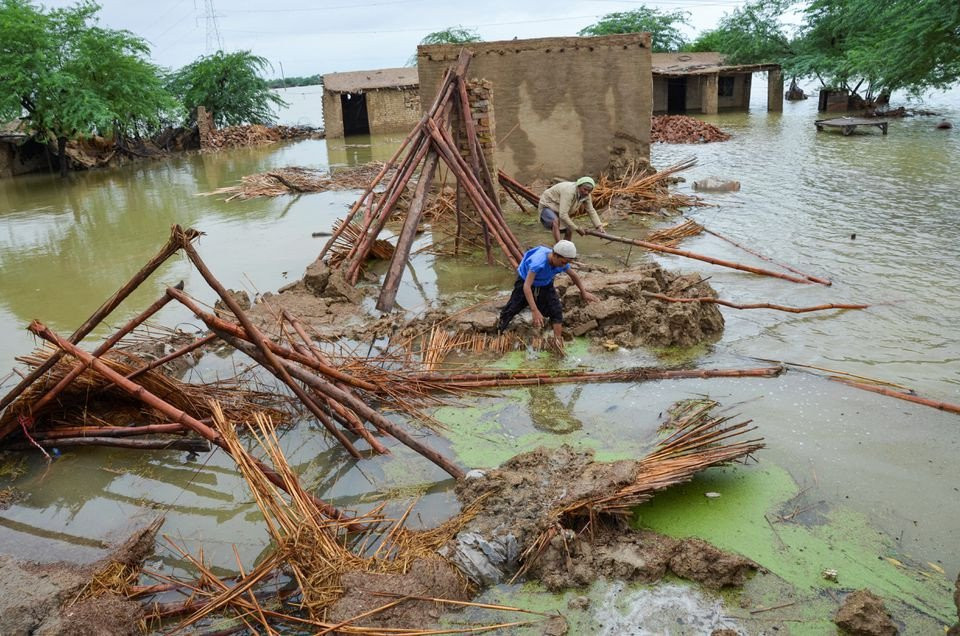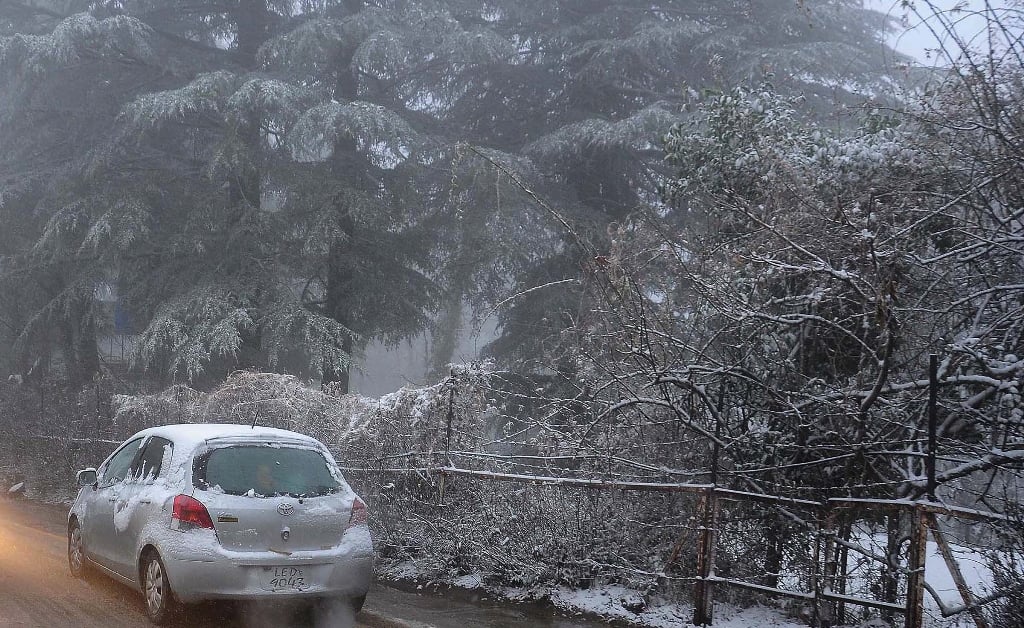
India released around 185,000 cusecs of water from Ujh Barrage, the National Disaster Management Authority (NDMA) notified on Sunday, citing the Pakistan Commissioner for Indus Waters (PCIW) – causing the flow in Ravi River to rise as more heavy rains were set to lash the country in the next 24 to 48 hours.
The evacuation drive regarding the settlements along the river kicked off and the people living there were being shifted to safer locations.
The NDMA recalled that last year, India had released 173,000 cusecs of water causing low-level floods at Jassar point in Ravi River.
The authority said considering the previous record, around 65,000 cusecs of water was expected to reach within the next 20 to 24 hours, and low-level floods were expected in the plain areas near Jassar.
It continued that the local administration would monitor the situation till July 20 as per the NDMA’s guidelines while the people were advised to stay informed during the period.
Monitoring is also under way at the Chenab River and Marala Headworks
Besides, relief camps were being set up in the low-lying areas of all districts in view of the possible floods, while rescue operation teams were fully prepared with their machinery.
Caretaker Punjab Chief Minister Mohsin Naqvi also reached Ravi River to monitor the situation.
Earlier, Naqvi while commenting on India releasing the water told the media in Lahore that the provincial government was prepared to deal with any untoward situation.
He added that because of the recent rains and fear of possible floods, the entire administration was on alert.
The caretaker Punjab chief minister continued that the chief secretary and the Punjab IGP had also reviewed the arrangements during a meeting a day earlier.
Naqvi said the release of more water by India might cause flooding in Punjab’s rivers.
“At 10am when the report that India was releasing water came in, the relevant agencies immediately reached Ravi,” he added.
He said the provincial government was ensuring the evacuation of the people living along the rivers.
The interim Punjab CM continued that encroachments along riverbeds were being removed.
He stressed the need for not building settlements on rivers as they obstructed the flow of water.
He said in case of floods, saving human lives was the first priority and that was why houses near the rivers were being evacuated.
To further add to the misery, the government on Sunday asked all public and private organisations to remain vigilant and ready as heavy rains accompanied by thunderstorms were expected in the country in the next 24 to 48 hours.
Climate Change Minister Sherry Rehman said the highest amount of rainfall would be witnessed in the cities of Punjab, including Lahore, Narowal, and Sialkot.
She added that other provinces had been alerted as well for heavy to moderate rainfall.
The minister continued that urban flooding alerts had been issued for cities and municipal areas with risks of landslides.
Sherry predicted that around 900,000 people would be affected by the rains.
She emphasised that coordinated preparedness and proactive responses had saved lives, asking all the response teams to remain vigilant.
Earlier, the NDMA warned about the possibility of severe thunderstorms and heavy rainfall in north and northeastern Punjab, including Lahore, Sialkot, and Narowal, over the next 48 hours.
It also forecast thunderstorms in northeastern Balochistan, including Sibi, Zhob, Killa Saifullah, Khuzdar, Barkhan, Loralai, Dera Bugti and Lasbela.
The NDMA predicted a potential for thunderstorms and heavy rains in Sindh’s Karachi, Hyderabad, Sukkur, Larkana, Tharparkar, Badin and Shaheed Benazirabad.
In Khyber-Pakhtunkhwa, the authority predicted rains in Bannu, Dera Ismail Khan, Malam Jabba and Balakot in the next two days.
In its guidelines issued along with the weather forecast, the NDMA directed city and district administrations to ensure contingency plans for traffic in areas vulnerable to flooding in cities, particularly in Lahore, Gujranwala, Sialkot, and Faisalabad.
It warned about urban flooding in municipal areas and landsliding in hilly areas.
“All district administrations should ensure completion of stock-taking and reconnaissance and public awareness/information in vulnerable areas, especially Marala Headworks on River Chenab and Jassar on Ravi River with respect to chances of flood flows until July 20,” the guidelines read.
The authority ordered all the stakeholders to maintain proactive coordination to ensure quick response at the grassroots level.
According to the statistics released by the NDMA, 76 people, including 31 children, were killed, 133 others injured and 76 houses damaged during the last two weeks of rain across the country.
Punjab led in terms of casualties as 48 people perished in the province because of the rains.
In Lahore alone, the provincial capital of Punjab, record-breaking rainfall killed dozens of people.
In K-P, 20 people died because of the rains, five in Balochistan and three in Azad Jammu and Kashmir and erstwhile Fata.
The people who died in the rains included 31 children, 30 men and 15 women.
According to the NDMA, 133 people were injured in various accidents caused by rains -- 86 in Punjab and 37 in K-P.
They included 46 children, 49 men and 38 women.
Around 44 cattle were washed away in the rains.
The heavy rains damaged 76 houses -- 46 in Punjab and 32 in K-P.
(With input from agencies)
























COMMENTS
Comments are moderated and generally will be posted if they are on-topic and not abusive.
For more information, please see our Comments FAQ